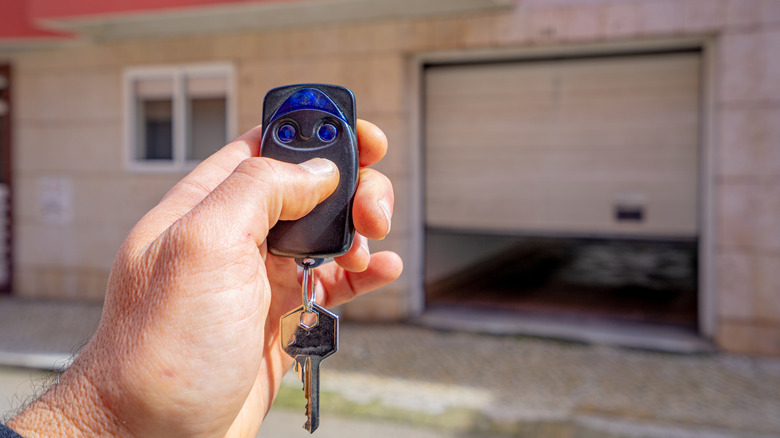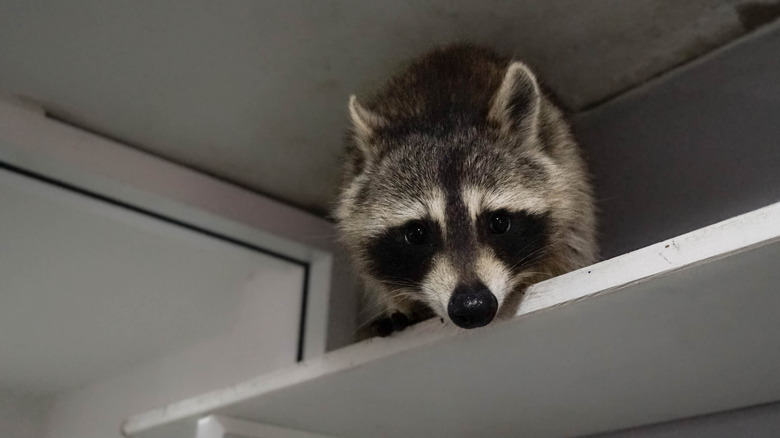Why Do Some People Leave Their Garage Door Cracked Open?
While strolling along the sidewalks of your neighborhood for a post-dinner walk, you may glance over at your neighbor's house and notice that the garage door has stopped a few inches or a few feet short of touching the ground. It's always possible that this gap is the result of garage door opener problems, or a case of hurry and inattention on the way to work, but oftentimes, the door's failure to meet the pavement is not an accident.
There are a few compelling reasons homeowners might intentionally leave their garage door cracked open: One of the most common is for increased ventilation — whether it's to allow fresh air in to help mitigate smells, or to let hot air out in warm climates. Another justification for maintaining a gap comes from pet owners providing shelter for an outdoor cat. While the practice of leaving a garage door partially ajar is not uncommon, there are some pros and cons to consider.
Advantages to leaving the garage door cracked
Depending on the situation, a partially closed garage door brings certain advantages. Garages may be designed for parking cars, but for many of us, they end up doing double duty as workshops or storage sheds for the many things we want to keep but don't want in the house. Cue the shelves full of paint cans, bug sprays, and carpet cleaners — as well as all the things you should avoid storing in the garage in the first place. Many chemicals can do a lot of off-gassing, which creates noxious fumes that affect air quality. Keeping the garage door cracked open helps ventilate those annoying and potentially hazardous smells.
But airing out toxic gasses is not the only reason for leaving a garage door cracked — climate control can also be a concern. Most garages don't have air conditioning, nor are they insulated, which means that in hot climates they can become sweltering as well as stinky. Leaving the door raised slightly can allow some of the built up heat to dissipate.
Another motive for leaving a garage door partially open is to allow access for a cat that a family wants to shelter, but not let inside the house. Although keeping cats indoors is the most effective way to keep them safe from diseases and injuries, some pet caretakers compromise by creating a pet space in a garage to avoid introducing cat litter odors into the home.
Cons to leaving the garage door cracked
Despite these well-intentioned motivations, leaving a garage door cracked can also cause problems. Of course, if a family cat can enter, stray felines can enter as well, potentially causing territorial fighting. And any opening that is big enough for a cat to pass through is also big enough for certain types of wildlife. Mice and rats can chew up belongings stored in the garage, leaving droppings and causing health risks due to hantavirus. Raccoons can also enter, and if food and water is available for an outdoor cat, these wild mammals can make a mess of the feeding station – not to mention spreading diseases or parasites, such as giardia. Insects may also take an open door as an invitation.
A garage door that is not fully closed can also make it easier for two-legged intruders to force entry: If given the option between an open door and a closed one, a thief will pick the easier option, so keeping this access to the home closed can be an important part of preventing break-ins. Beyond home security concerns, consistently leaving the door in an in-between position can expose the hardware to the elements, causing them to fail.


